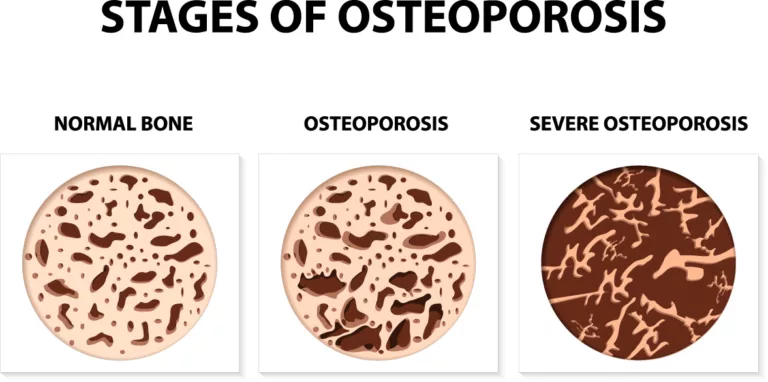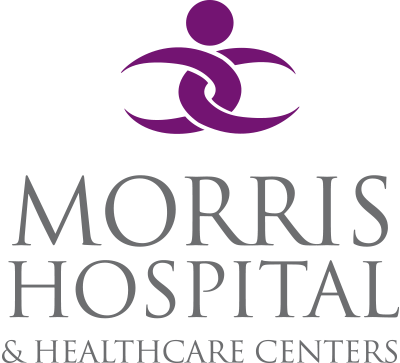One out of every 10 adults over the age of 50 will develop osteoporosis in their lifetime and it often goes undiagnosed. Often called the “silent disease,” most people do not know they have osteoporosis until they break or fracture a bone. Bones affected by osteoporosis can become so fragile that everyday activities such as walking, lifting or even coughing can cause a fracture or break.
The Morris Hospital Osteoporosis Management Program was designed to reduce breaks and fractures through earlier diagnosis and improved management of the condition.
Patients start the program by meeting one-on-one with Nurse Practitioner Taelor Stuedemann at the Orthopedics & Sports Medicine office in Morris where they discuss their medical history.
Depending on the patient and severity, treatment recommendations vary, with some patients needing multiple methods of treatments to manage their condition. Treatment may include medication, injections, physical therapy, and life style changes such as healthy eating habits and consistent exercise. For some patients, follow up appointments may be necessary to ensure the treatment plan is working.
While consistent treatment can reduce the severity of osteoporosis, there is currently is no cure for osteoporosis. That’s why effective management of the condition is so important.
Individuals who have risk factors or a family history of osteoporosis are encouraged to talk to their primary care provider or call Morris Hospital Orthopedics & Sports Medicine at 815-942-4875 and ask for an appointment with the Osteoporosis Management Program.

WHERE IS THE PROGRAM OFFERED?
The Osteoporosis Management Program is offered at:
Morris Hospital Orthopedics & Sports Medicine
1051 W. U.S. Route 6, Suite 100
Morris, IL 60450
Phone: 815.942.4875
Morris Hospital YMCA
2200 W. Dupont Avenue
Morris, IL 60450
Phone: 815.942.4875
FREQUENTLY ASKED QUESTIONS
What is osteoporosis?
Osteoporosis is a bone density disease that develops when bone mineral density and bone mass decreases, or when the quality or structure of bone changes. Bones affected by osteoporosis can become so fragile that everyday activities such as walking, lifting or even coughing can cause a fracture or break.
What are the risk factors of osteoporosis?
Although osteoporosis has no symptoms, there are known risk factors that can increase the likelihood of osteoporosis developing. Risk factors include being a woman age 65 or older or a man age 70 or older, low testosterone levels, previous bariatric surgery, a history of eating disorders, and long-term smoking or alcohol abuse. Patients who have experienced fragility fractures or multiple fractures should be evaluated for osteoporosis.
How is osteoporosis diagnosed?
Because there are no symptoms for osteoporosis, diagnosing the disease can be challenging. One of the first things our team does is sit down with each patient and discuss their complete medical history.
If there is a pattern of bone breaks or fractures in a patients history, a DEXA scan may be ordered to learn more about the bone’s density or strength, an important step in diagnosing osteoporosis. Bloodwork can also be used to gain more insight into the patient’s medical history.
Why do I need to manage my osteoporosis?
Untreated osteoporosis can be devastating over time. Because the bone is weakened, the recovery time for an osteoporosis related break can be significantly longer than normal bone breaks. If the cycle of breaks and fractures is repeated, over time osteoporosis can lead to bone collapse, resulting in life-long pain. Patients who do not manage their osteoporosis often have severe mobility issues and may not be able to return to their everyday routine.
The severity of osteoporosis is on a spectrum, ranging from early stage osteopenia to severe cases of osteoporosis. Osteoporosis can develop in any bone but happens most often in the bones of the hip, spine, forearm and wrist. Severe injuries to these areas can impact a patient’s ability to live independently, especially for elderly patients.
How is osteoporosis treated?
Depending on the patient and severity, treatment recommendations vary, with some patients needing multiple methods of treatments to manage their condition. Treatment may include medication, injections, physical therapy, and life style changes such as healthy eating habits and consistent exercise. For some patients, follow up appointments may be necessary to ensure the treatment plan is working.
While consistent treatment can reduce the severity of osteoporosis, there is currently is no cure for osteoporosis. That’s why effective management of the condition is so important.
Why choose Morris hospital osteoporosis management program?
The goal of the Morris Hospital Osteoporosis Management Program is to reduce breaks and fractures through earlier diagnosis and improved management of the condition. Because osteoporosis is hard to diagnose without a fracture or break, it is important for patients to have education on the risk factors.
The Osteoporosis Management team at Morris Hospital is a valuable resource to answer any questions regarding osteoporosis diagnosis or treatment. Patients in the program work directly with a nurse practitioner to review their risk of developing osteoporosis.
For patients diagnosed with osteoporosis, treatment plans are designed based on the severity of the osteoporosis and where it is located.

